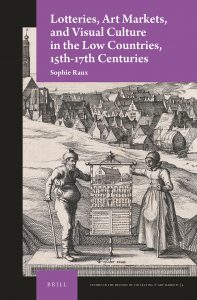 Sophie Raux, Lotteries, Art Markets, and Visual Culture in the Low Countries, 15th-17th Centuries, Leyde: Brill, 2018
Sophie Raux, Lotteries, Art Markets, and Visual Culture in the Low Countries, 15th-17th Centuries, Leyde: Brill, 2018
Series: Studies in the History of Collecting & Art Markets, Volume: 4
Relié, 372 p.
ISBN: 978-90-04-35881-2
Pour commander l’ouvrage sur le site de l’éditeur : https://brill.com/abstract/title/33887
Lotteries, Art Markets, and Visual Culture examines the lotteries as devices for distributing images and art objects, and constructing their value in the former Low Countries. Alongside the fairs and before specialist auction sales were established, they were an atypical but popular and large-scale form of the art trade. As part of a growing entrepreneurial sensibility based on speculation and a sense of risk, they lay behind many innovations. This study looks at their actors, networks and strategies. It considers the objects at stake, their value, and the forms of visual communication intended to boost an appetite for ownership. Ultimately, it contemplates how the lottery culture impacted notions of Fortune and Vanitas in the visual arts.
Sommaire

Leave a Reply
You must be logged in to post a comment.